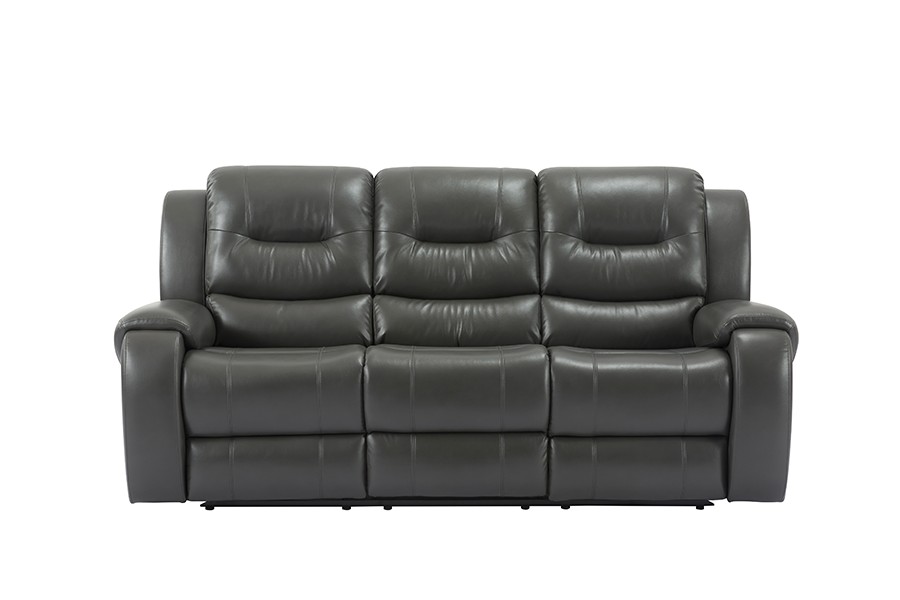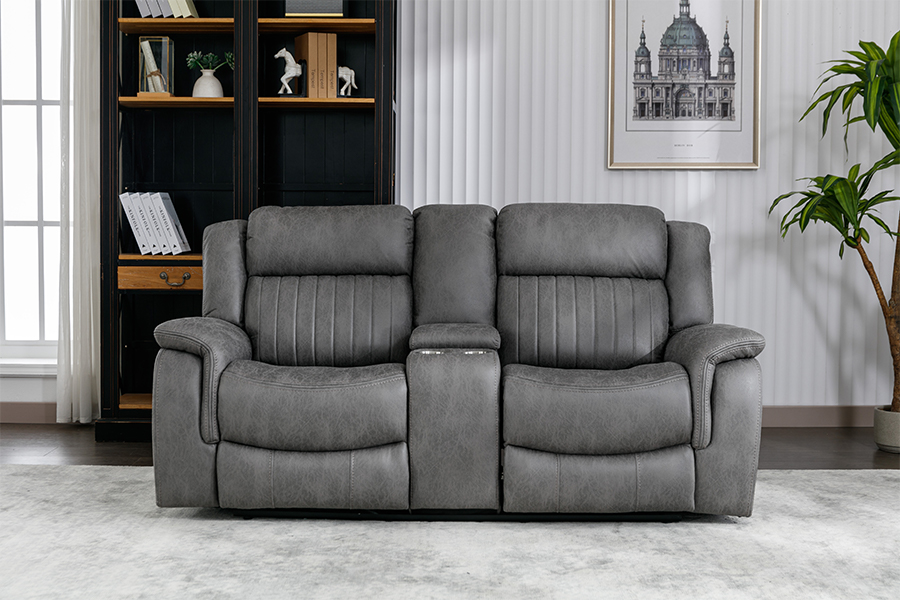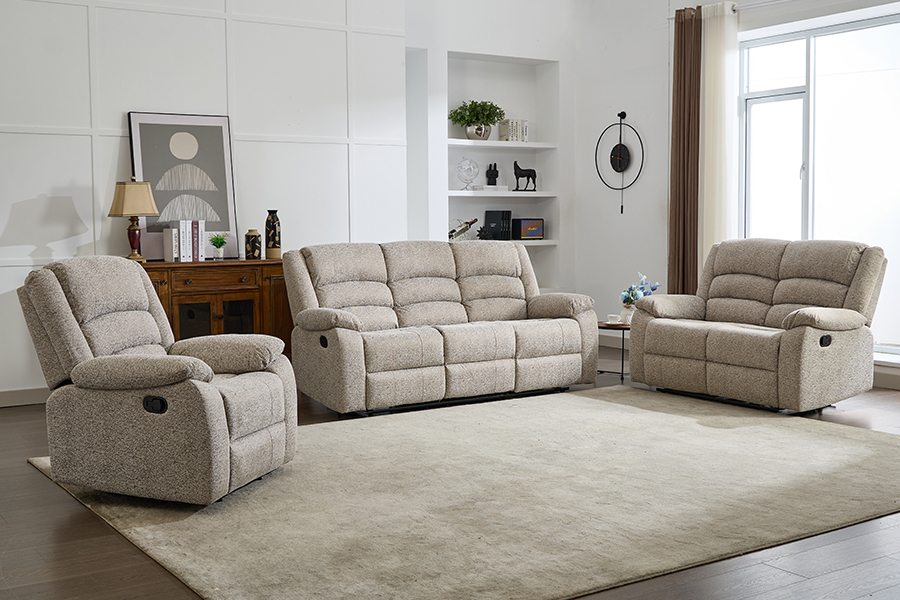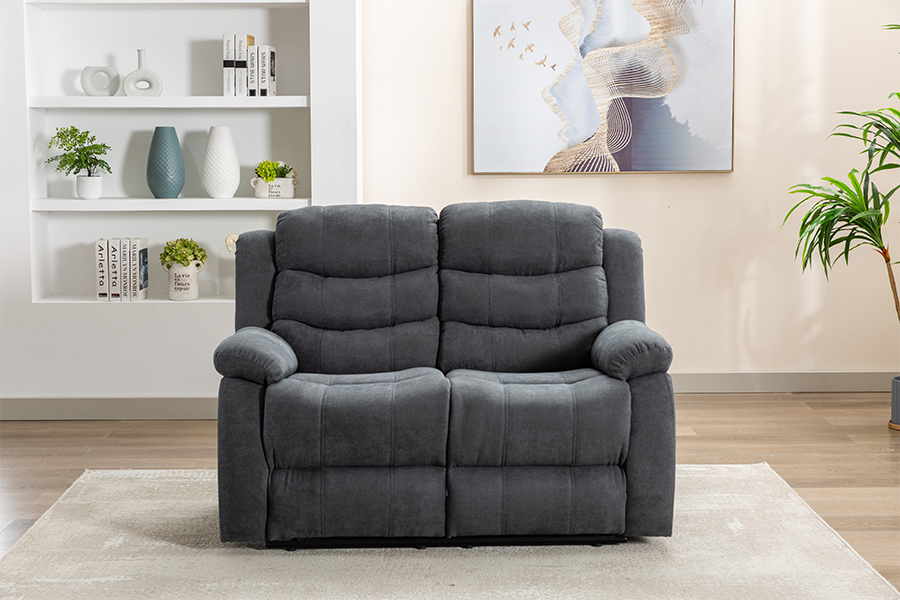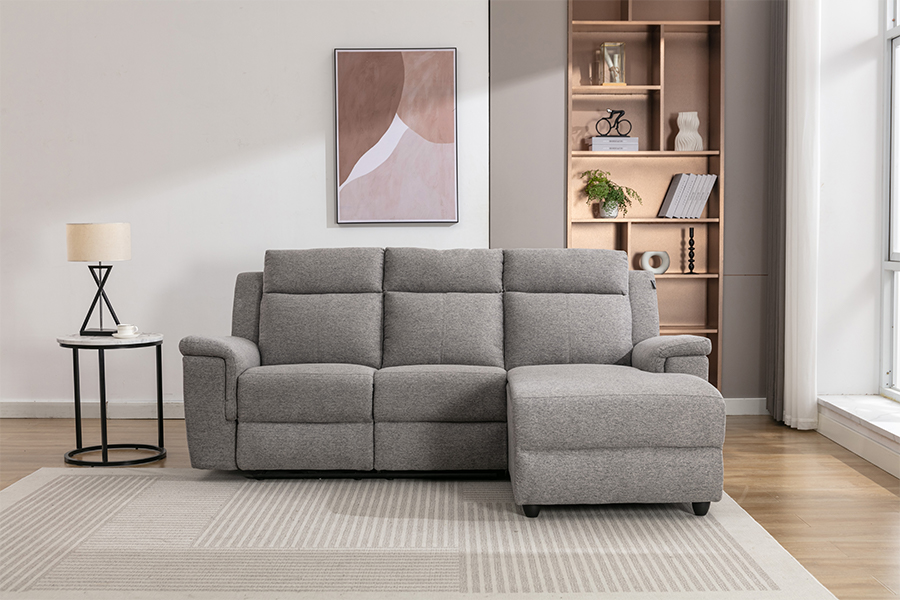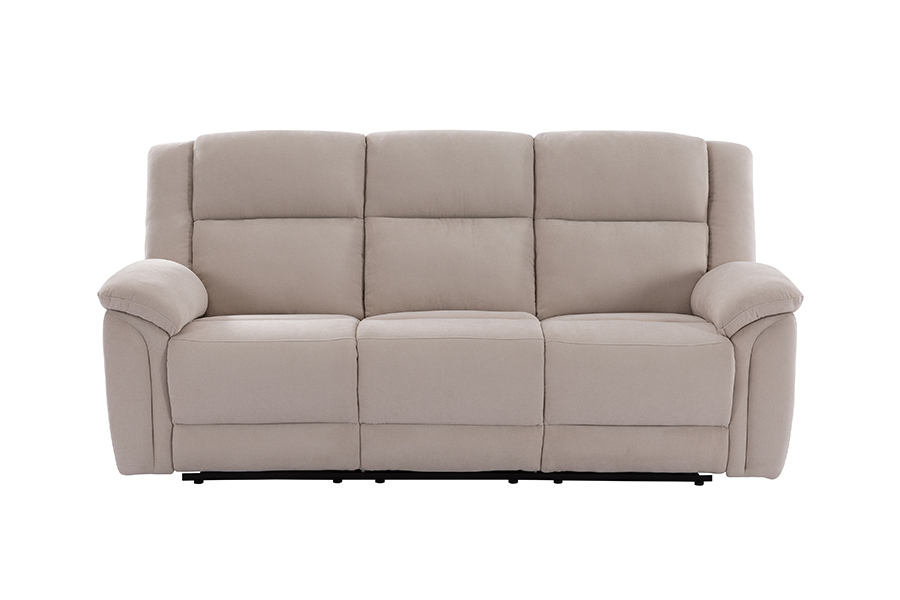Web Menu
Product Search
Exit Menu

The Ultimate Guide to Choosing the Perfect Sofa Fabric: Style, Comfort, and Durability
Posted by Admin | 11 Sep
The Importance of Sofa Fabric
A sofa is often the centerpiece of any living space, serving as a hub for relaxation, entertainment, and social gatherings. While the style and shape of a sofa are crucial, the fabric you choose plays an equally important role in both appearance and functionality. Selecting the right sofa fabric affects comfort, durability, maintenance, and even how well the furniture integrates with your overall interior design.
Key Factors When Choosing Sofa Fabric
| Factor | Importance | Example Consideration |
|---|---|---|
| Comfort | High | Softness, breathability, tactile feel |
| Durability | High | Double rub rating, wear resistance |
| Maintenance | Medium | Ease of cleaning, stain resistance |
| Aesthetics | High | Color, pattern, texture |
| Budget | Medium | Initial cost vs. long-term value |
| Environment | Medium | Sunlight exposure, humidity, pets/children |
Natural Fiber Sofa Fabrics
Natural fibers offer a timeless appeal and unique tactile qualities, making them a popular choice for sofas in both casual and formal settings. Each type of natural fiber has its advantages, limitations, and ideal usage scenarios.
Cotton Sofa
Cotton is one of the most widely used natural fibers for sofas due to its softness and versatility. It is breathable, comfortable for long periods of sitting, and easily accepts dyes, resulting in a wide range of colors and patterns.
Cotton Sofa Characteristics
| Feature | Description | Notes |
|---|---|---|
| Softness | High | Comfortable for long sitting sessions |
| Durability | Medium | Wear resistance depends on weave |
| Maintenance | Medium | Can be machine-washed or spot-cleaned |
| Color Options | Very High | Accepts a wide range of dyes |
| Ideal Use | Casual/Home | Best for family-friendly spaces |
Linen Sofa
Linen, derived from the flax plant, is celebrated for its relaxed elegance and breathability. It offers a sophisticated look and softens over time with use.
Table Linen Sofa Characteristics
| Feature | Description | Notes |
|---|---|---|
| Softness | Medium | Softens with time and use |
| Durability | High | Strong natural fiber |
| Maintenance | Medium | Requires careful cleaning to avoid shrinkage |
| Aesthetic | High | Elegant, natural texture |
| Ideal Use | Formal Spaces | Living rooms, lounges, sunrooms |
Wool Sofa
Wool brings warmth, resilience, and natural insulation to sofas. It is strong, breathable, and resistant to pilling and fire.
Wool Sofa Characteristics
| Feature | Description | Notes |
|---|---|---|
| Softness | Medium | Comfortable but may feel slightly itchy |
| Durability | High | Excellent wear resistance |
| Maintenance | Low | Requires professional cleaning |
| Insulation | High | Keeps spaces warm |
| Ideal Use | Cold Climates | Living rooms, dens, traditional homes |
Leather Sofa
Leather is a classic choice for high-end sofas, valued for its durability and luxurious feel. It ages gracefully, developing a unique patina over time.
Types of Leather:
Aniline: Softest, most natural look, least stain-resistant.
Semi-Aniline: Balanced look with some stain protection.
Protected/Pigmented: Highly durable and stain-resistant, with uniform color.
Leather Sofa Types
| Type | Look & Feel | Durability | Stain Resistance | Best For |
|---|---|---|---|---|
| Aniline | Natural, soft | Medium | Low | High-end, low-traffic |
| Semi-Aniline | Soft, slightly treated | High | Medium | Family-friendly, moderate use |
| Protected/Pigmented | Smooth, uniform | Very High | High | Busy households, commercial spaces |
Silk Sofa
Silk represents the pinnacle of luxury in sofa fabrics. Its delicate texture and shimmering appearance create an elegant, sophisticated aesthetic.
Silk Sofa Characteristics
| Feature | Description | Notes |
|---|---|---|
| Softness | Very High | Silky smooth, luxurious feel |
| Durability | Low | Delicate and prone to damage |
| Maintenance | Low | Requires professional care |
| Appearance | Very High | Elegant, shimmering surface |
| Ideal Use | Low-Traffic | Formal lounges, showrooms |
Synthetic Fiber Sofa Fabrics
Synthetic fibers are engineered for performance, offering enhanced durability, stain resistance, and often a more affordable price point. They are widely used in modern sofas, especially in homes with children, pets, or high-traffic areas.
Polyester Sofa
Polyester is one of the most popular synthetic fibers for sofas due to its durability and resistance to fading and stains. It is often blended with natural fibers to improve performance.
Polyester Sofa Characteristics
| Feature | Description | Notes |
|---|---|---|
| Softness | Medium | Comfortable but less breathable than cotton |
| Durability | High | Excellent wear resistance |
| Maintenance | High | Easy spot cleaning, low maintenance |
| Color Retention | High | Resistant to fading |
| Ideal Use | High-Traffic Areas | Family living rooms, dens |
Nylon Sofa
Nylon is known for its exceptional strength and abrasion resistance, making it ideal for heavy-duty use.
Nylon Sofa Characteristics
| Feature | Description | Notes |
|---|---|---|
| Softness | Medium | Smooth, less soft than cotton |
| Durability | Very High | Ideal for heavy use |
| Maintenance | High | Easy cleaning and color retention |
| Sunlight Resistance | Medium | Avoid prolonged direct sun |
| Ideal Use | Heavy-Duty | Commercial spaces, busy homes |
Olefin (Polypropylene) Sofa
Olefin, also known as polypropylene, is valued for its resistance to moisture, stains, mildew, and fading.
Olefin Sofa Characteristics
| Feature | Description | Notes |
|---|---|---|
| Softness | Medium-Low | Slightly coarse texture |
| Durability | Very High | Resists stains, moisture, and mildew |
| Maintenance | High | Simple cleaning, low upkeep |
| Sunlight Resistance | High | Excellent fade resistance |
| Ideal Use | Outdoor/High-Moisture Areas | Patios, sunrooms, kid/pet-friendly homes |
Acrylic Sofa
Acrylic is often used as a wool alternative for its soft, wool-like feel and excellent fade resistance.
Acrylic Sofa Characteristics
| Feature | Description | Notes |
|---|---|---|
| Softness | High | Soft, wool-like feel |
| Durability | Medium-High | Good wear resistance, less than nylon |
| Maintenance | High | Easy cleaning, mildew-resistant |
| Sunlight Resistance | Very High | Retains color under sun exposure |
| Ideal Use | Sun-Exposed Areas | Casual living rooms, sunrooms |
Rayon/Viscose Sofa
Rayon (Viscose) is designed to mimic the look and feel of natural fibers like silk or cotton.
Rayon/Viscose Sofa Characteristics
| Feature | Description | Notes |
|---|---|---|
| Softness | Very High | Silky, smooth feel |
| Durability | Medium | Requires gentle care |
| Maintenance | Medium-Low | Sensitive to water, professional cleaning recommended |
| Appearance | High | Elegant drape and texture |
| Ideal Use | Formal/Low-Traffic | Guest rooms, formal lounges |
Microfiber Sofa
Microfiber is made from tightly woven synthetic fibers, often polyester, creating a soft, smooth, and highly durable surface.
Microfiber Sofa Characteristics
| Feature | Description | Notes |
|---|---|---|
| Softness | High | Smooth, soft surface |
| Durability | Very High | Excellent resistance to wear |
| Maintenance | Very High | Spot-cleaning and vacuum-friendly |
| Pet/Child-Friendly | Very High | Resistant to scratches and stains |
| Ideal Use | High-Traffic Homes | Family rooms, playrooms |
Blended Fabrics
Blended fabrics combine the best properties of two or more fibers, creating sofa materials with enhanced performance, comfort, and durability. By combining fibers, manufacturers can leverage the strengths of each material while mitigating weaknesses. Blended sofas have become increasingly popular in both residential and commercial settings.
Benefits of Blended Sofa Fabrics
Balanced Comfort and Durability: For example, a cotton-polyester blend combines the softness and breathability of cotton with the stain resistance and durability of polyester.
Cost-Effectiveness: Blends often offer a more affordable alternative to pure natural fibers without sacrificing quality.
Enhanced Aesthetic Options: Blending allows for richer textures, patterns, and finishes that appeal to modern interior design trends.
Common Blends and Applications
Cotton-Linen Blend: Softness of cotton with linen’s strength and breathability; ideal for casual and semi-formal living spaces.
Polyester-Nylon Blend: Extremely durable and resistant to wear; suitable for high-traffic areas like family rooms or commercial lounges.
Cotton-Polyester Blend: Comfort of cotton with polyester’s easy-care and stain resistance; a versatile choice for most homes.
Common Blended Sofa Fabrics
| Blend Type | Comfort | Durability | Maintenance | Ideal Use |
|---|---|---|---|---|
| Cotton-Linen | High | Medium-High | Medium | Casual and semi-formal living rooms |
| Polyester-Nylon | Medium | Very High | High | Family rooms, high-traffic areas, commercial lounges |
| Cotton-Polyester | High | High | High | Everyday home use, pet-friendly spaces |
| Wool-Polyester | Medium-High | High | Medium | Cozy, warm living rooms in colder climates |
| Linen-Polyester | Medium | High | Medium | Formal or semi-formal areas with moderate traffic |
Why Choose a Blended Sofa Fabric
Blended sofa fabrics provide a balanced performance profile, making them highly versatile for different lifestyles:
Homes with Children or Pets: Blends like cotton-polyester or polyester-nylon combine durability and stain resistance, minimizing wear and tear.
High-Traffic Living Areas: Polyester or nylon blends provide long-lasting performance without sacrificing comfort.
Aesthetic Flexibility: The combination of fibers allows for unique textures, subtle sheens, and complex patterns that can complement any interior design.
Blended sofas represent a practical choice for homeowners who want the advantages of both natural and synthetic fibers while maintaining comfort, style, and durability.
Key Factors to Consider When Choosing Sofa Fabric
Choosing the right sofa fabric involves evaluating several critical factors to ensure that your sofa meets both aesthetic and practical needs. Understanding these factors can help homeowners make informed decisions that combine style, comfort, and durability.
Durability (Rub Count / Wyzenbeek Rating)
Durability is one of the most important considerations for any sofa, especially in high-traffic areas or homes with children and pets. The Wyzenbeek (or Double Rub) test measures how well a fabric withstands wear and tear.
Double Rub Ratings:
| Use Case | Double Rubs | Recommendation |
|---|---|---|
| Residential Light Duty | 3,000–9,000 | Low-traffic spaces, formal rooms |
| Residential Medium Duty | 9,000–15,000 | Average daily use, living rooms |
| Residential Heavy Duty | 15,000–30,000 | Family rooms, homes with kids/pets |
| Commercial/Heavy Duty | 30,000+ | Offices, high-traffic lounges |
A higher rub count indicates better resistance to wear, making fabrics like microfiber, nylon, and polyester blends ideal for heavy-use sofas.
Lifestyle Considerations
Your daily routine and household composition significantly affect which sofa fabric is most practical.
Pets: Choose tightly woven, durable fabrics such as microfiber, protected leather, or outdoor-grade synthetics to resist scratches and stains. Avoid delicate natural fibers.
Children: Opt for stain-resistant and easy-to-clean fabrics. Synthetic blends like polyester-nylon or cotton-polyester are excellent choices for family-friendly sofas.
Allergies: Hypoallergenic materials like leather or tightly woven synthetics reduce dust mites and allergens, improving indoor air quality.
Traffic Level: High-traffic areas demand robust, wear-resistant fabrics, while low-traffic rooms can accommodate more delicate or luxurious choices.
Maintenance and Cleaning
Proper care is essential for prolonging the life of your sofa fabric. Always check fabric cleaning codes before use.
Fabric Cleaning Codes:
| Code | Cleaning Method | Notes |
|---|---|---|
| W | Water-based cleaner | Can use mild soap and water |
| S | Solvent-based cleaner | Requires dry cleaning solvents |
| WS | Water or solvent | Versatile cleaning options |
| X | Vacuum only | Professional cleaning only |
Tips for Sofa Maintenance:
Vacuum weekly with a soft brush to remove dust and debris.
Blot spills immediately; avoid rubbing to prevent deeper stains.
Rotate and flip reversible cushions regularly to ensure even wear.
Schedule professional cleaning every 12–24 months depending on fabric type and usage.
Aesthetics and Style
The visual impact of a sofa depends on fabric color, texture, and pattern, which should complement your overall interior design.
Color and Pattern: Light colors make a room feel spacious but show dirt easily. Bold patterns can act as a focal point.
Texture and Feel: Soft, plush textures create a cozy ambiance, while smoother fabrics provide a modern, sleek look.
Weave and Sheen: The weave affects durability and visual depth. Matte fabrics suit casual styles, while subtle sheen adds elegance.
Budget
Sofa fabrics vary widely in cost, and understanding the balance between upfront investment and long-term value is essential.
Natural fibers like silk and high-grade leather are premium options with higher costs.
Synthetic fabrics such as polyester, olefin, and microfiber offer affordability and durability.
A moderately priced, durable fabric may offer the best long-term value for everyday use.
Environmental Factors
Consider where your sofa will be placed and how environmental conditions affect its longevity.
Sunlight Exposure: Fabrics like acrylic, solution-dyed synthetics, or treated natural fibers resist fading in direct sunlight.
Humidity and Temperature: Breathable fabrics like cotton or linen are preferable in humid climates. Leather may feel sticky in high humidity or cold in low temperatures.
Summary of Key Factors for Sofa Fabric Selection
| Factor | Key Considerations | Examples |
|---|---|---|
| Durability | Rub count, fiber strength | Microfiber, nylon |
| Lifestyle | Pets, children, allergies, traffic | Polyester blends, leather |
| Maintenance | Cleaning codes, frequency | Spot-clean, vacuum, professional cleaning |
| Style | Color, pattern, texture, weave | Linen, silk, cotton |
| Budget | Initial cost vs. long-term value | Leather (high) vs. Polyester (affordable) |
| Environment | Sunlight, humidity, temperature | Acrylic, cotton-linen blends |
Modern Technologies and Fabric Innovations
In recent years, sofa fabrics have benefited from advanced technologies that improve durability, stain resistance, and overall usability. Modern innovations make it possible to enjoy the comfort and beauty of a sofa while minimizing maintenance challenges.
Water-Repellent Finishes
Water-repellent finishes are designed to prevent liquid absorption, allowing spills to bead up on the surface for quick cleaning. These finishes are particularly useful for sofas in humid environments or homes with children and pets.
Key Advantages:
Prevents water spots and mildew
Ideal for indoor-outdoor furniture, sunrooms, and basements
Sofa Water-Repellent Fabric Options
| Fabric | Water Resistance | Maintenance Notes | Ideal Use |
|---|---|---|---|
| Olefin (Polypropylene) | Very High | Easy wipe-clean | Sunrooms, patios, kid-friendly |
| Microfiber | High | Vacuum and spot clean | Family rooms, high-traffic areas |
| Treated Cotton-Polyester | Medium | Reapply protective spray | Casual indoor sofas |
Eco-Friendly and Sustainable Innovations
Modern sofa fabrics are increasingly developed with sustainability in mind. Manufacturers are producing recycled polyester, organic cotton, and other eco-friendly blends to reduce environmental impact.
Eco-Friendly Sofa Fabric Options
| Fabric | Eco Features | Best For |
|---|---|---|
| Recycled Polyester | Made from post-consumer materials | Family-friendly, sustainable homes |
| Organic Cotton | Chemical-free, biodegradable | Casual, eco-conscious interiors |
| Hemp-Linen Blend | Natural fibers, low water use | Formal or semi-formal sofas |
Maintenance and Care Tips for Longevity
Proper care is essential to extend the life, appearance, and comfort of any sofa. Even the most durable fabrics benefit from regular maintenance and thoughtful handling.
Regular Vacuuming and Dusting
Vacuuming your sofa at least once a week with a soft brush attachment removes dirt, dust, and pet hair. This prevents particles from embedding into the fibers, which can lead to premature wear.
Vacuuming Frequency by Sofa Fabric
| Fabric Type | Recommended Vacuuming Frequency | Notes |
|---|---|---|
| Cotton / Linen | Weekly | Prevents dust accumulation |
| Wool / Silk | Bi-weekly | Use gentle attachment |
| Microfiber | Weekly | Static may attract lint |
| Leather | Monthly | Wipe with damp cloth; avoid harsh cleaners |
Immediate Spill Cleanup
Quick response to spills is crucial for maintaining sofa fabric. Blot the area with a clean, white cloth from the outside in to prevent spreading. Avoid rubbing, which can push stains deeper into fibers.
Spill Management by Fabric Type
| Fabric | Recommended Action | Notes |
|---|---|---|
| Microfiber | Blot, mild soap | Stain-resistant; quick cleanup |
| Leather | Wipe with damp cloth | Avoid soaking; condition regularly |
| Silk / Rayon | Professional cleaning | Sensitive, prone to damage |
| Olefin / Polyester | Wipe, mild detergent | High durability, easy to clean |
Protecting from Direct Sunlight
Prolonged exposure to direct sunlight can cause fabrics to fade, weaken, and degrade over time. Position your sofa away from direct sun, use curtains or blinds, or apply UV-protective window films.
Sunlight Protection Tips for Sofas
| Fabric Type | Risk Level | Protection Measures |
|---|---|---|
| Silk / Rayon | High | Use curtains, avoid direct sunlight |
| Cotton / Linen | Medium | Rotate cushions, UV window films |
| Microfiber / Leather | Low | Minimal protection needed; still rotate cushions |
Professional Cleaning Schedule
Even with regular home care, professional cleaning every 12–24 months is recommended depending on fabric type and usage. Professionals have specialized equipment and knowledge to deep clean without damaging the sofa.
Flipping and Rotating Cushions
Regularly flipping and rotating reversible cushions ensures even wear and prevents permanent indentations. This helps maintain the sofa’s shape and prolongs the life of the cushions.
Cushion Care Recommendations
| Cushion Type | Frequency | Notes |
|---|---|---|
| Foam | Monthly | Rotate and flip to prevent sagging |
| Feather / Down | Monthly | Fluff and rotate for even support |
| Combination | Monthly | Rotate, flip, and fluff as needed |
Conclusion
Choosing the right sofa fabric balances aesthetics, durability, comfort, and practicality. From natural fibers to synthetic and blended options, modern technologies, stain-resistant treatments, and eco-friendly innovations, today’s sofas offer unmatched versatility
Related Products

 Floor 2 No.533 Shuangqiao Road, Dipu Street, Anji County, Huzhou City, Zhejiang Province, China.
Floor 2 No.533 Shuangqiao Road, Dipu Street, Anji County, Huzhou City, Zhejiang Province, China. Josie@boshenfurniture.com
Josie@boshenfurniture.com 0086-15105823033
0086-15105823033
Copyright © BOSHEN FURNITURE CO., LTD. All rights reserved.OEM/ODM Upholstered Seating Furniture Manufacturers
 English
English Español
Español